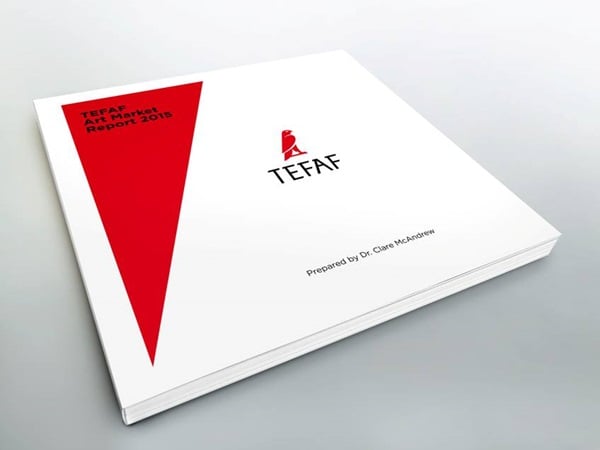Analysis
40 Percent of World Gallery Art Sales Made at Fairs and Other Key Findings in the TEFAF Art Market Report 2015
There were 180 major art fairs with an international element.

There were 180 major art fairs with an international element.

Daria Daniel


The TEFAF Art Market Report, delivered by Dr. Clare McAndrew of Arts Economics, is considered the authority on data relating to auctions, art fairs, and market trends (see Clare McAndrew Explains How She Prepares the TEFAF Art Market Report). It’s presented in conjunction with the opening of the TEFAF art fair in Maastricht.
This year’s compilation shows an increase in interest in high-value art (See World Art Market Passes €51 Billion Says 2015 TEFAF Art Market Report) with a surge in postwar and contemporary art. We’ve sifted through the hefty TEFAF Art Market Report 2015 and pulled the top findings you need to know:

1. 1,530 lots were sold at auction for over €1 million in 2014
This figure is up nearly 17 percent from 2013 (see the artnet News report The Biggest Auction Year Ever). Among these lots, 96 sold for more than €10 million. The total lots represented 48 percent of the value of the fine art auction market. While works priced over €500,000 accounted for 50 percent of the market in 2011, today they account for 58 percent of the market.
However, the majority of artists works sold at auction in 2014 went for below €50,000 with only 8 percent of artists works sold at auction rising above this number (see $10 Million Van Gogh Drawing To Be Unveiled at TEFAF Maastricht for the First Time in 100 Years.)
Less than 1 percent of artists works sold for over €1 million (only around 800 artists worldwide). Numerically, 127,367 artists works sold at auction in 2014 and only 54 accounted for lots priced over €10 million.

2. Postwar and contemporary art was the largest sector of the fine art market in 2014
Postwar and contemporary Art represented 48 percent of all fine art sales by value. Auction sales in this sector reached €5.9 billion, up 19 percent from 2013 and the highest total ever recorded. The market for postwar and contemporary art has developed exponentially over the past three decades.
The US was at the crux of these sales, with a share of 46 percent of their value. 67 percent if postwar and contemporary art priced over €1 million was sold in the US this year.
Modern art sales came in second, accounting for 28 percent. Together, postwar and contemporary and Modern accounted for 76 percent.
3. The US was the key center worldwide for sales of postwar and contemporary art
The US held 46 percent of the market by value. Auction sales within the US grew by 25 percent in value, reaching 2.7 billion euros. Sales of postwar and contemporary art in the US have now increased by over 425 percent in the period between 2009 and 2014.


4. In 2014, there were 180 major art fairs with an international element
Recent years have seen the emergence of Art Basel in Hong Kong (see What Are Top Dealers Bringing to Art Basel in Hong Kong 2015?), the Abu Dhabi Art Fair, the Independent, Art Rio, ExpoChicago, and Frieze New York, among others. The top 22 fairs generated over a million visitors. These events bring tremendous revenue to the art trade and greatly contribute to the hosting cities, both culturally and fiscally.


5. Sales made at fairs accounted for a reported 40 percent of all dealer sales in 2014 (€9.8 billion)
Sales at art fairs totaled 40 percent of all dealer sales, a shy six percent behind in-gallery sales. The margin separating both sectors has significantly narrowed over the last 10 years. (See What Sold at Frieze London 2014?, FIAC Is the Art Fair Europe Wants, and Europe’s 10 Best Art Fairs in 2014.)
In 2014, international fairs fared slightly better at 21 percent of sales, than local fairs at 19 percent. Dealers have come to rely on these fairs to support their businesses, with 41 percent achieving half or more of their annual sales through fairs.